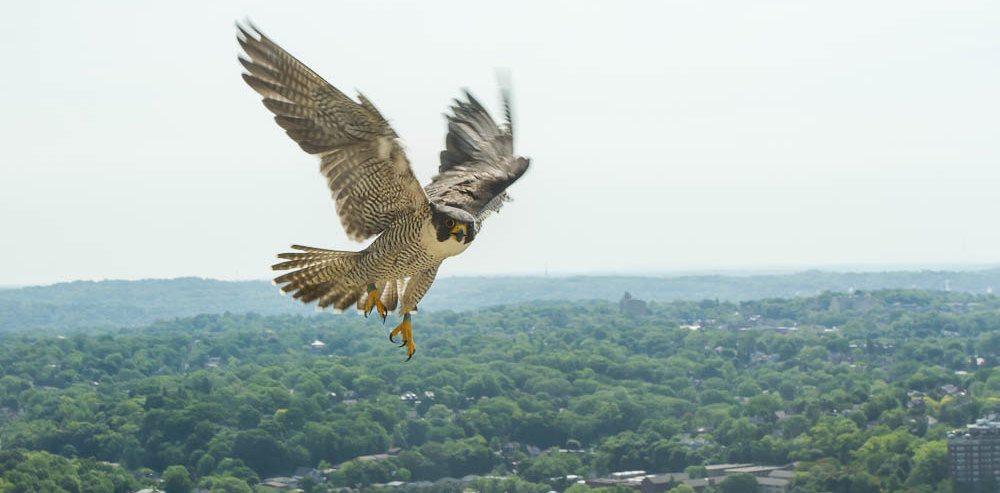
The Center for Conservation Biology in Williamsburg, Virginia closely monitors Virginia’s peregrine falcons — so closely, in fact, that they identify individual nesting birds. CCB may not know the origin of every adult peregrine (some arrive unbanded) but their goal is to know who’s who at every site.
Now that the 2018 nesting season is over, CCB analyzed their identification data and discovered an anomaly in Virginia. Not only did they see the highest turnover rate of any year to date, but three times as many female peregrines were replaced as males.
Only 10.5% of males were lost compared to 35.0% of females. … [This] ongoing trend is opposite of the pattern of survival documented within the peregrine population breeding within the Midwest.
Female Peregrines Under Pressure, Center for Conservation Biology newsletter, 2 Oct 2018
The female peregrine pictured above, Hope (black/green 69/Z), hatched at Hopewell, Virginia in 2008. She now nests at the Pitt’s Cathedral of Learning, far away from her Virginia birthplace. She chose a territory where female survival is higher than where she was born.
Read more about Virginia’s peregrine turnover rate in this CCB article, Female Peregrines Under Pressure.
(photo of Hope at the Cathedral of Learning, 27 May 2016, by Peter Bell)
Thank you so much for this article. It is disturbing and hopefully proves to be a one year anomaly and not a developing trend. Every Peregrine is precious and we want them to live long and produce many young falcons!
Maryann, it’s fortunate that all of the “lost” birds are replaced. It might even be that they are replaced by the individual that ran them out of town.
I’m curious if this isn’t a sign of a healthy population…perhaps hitting a saturation point or just past what a sustainable population is. I’ll leave it to the wildlife biologists to collect the data to answer that. But if the prime sites are that much better than others this could just be greater turnover due to greater competition. Imagine that! Too many peregrines! If only we could bump up those in natural habitats this could be really heartening.
I guess we’ll all tune in next year for the next chapter. More data!
Sure sign of healthy populations. When there were few birds around it was common for the first successful pairs to last for many years some as many as 16 years. Look at Dorothy on the Pitt tower. With lots of “floaters” pushing the residents hard it’s pretty tough on the older birds and even the young interlopers get challenged. Looking forward to the day when there is a peregrine on every church steeple and tall office building that has a safe distance from the next tall one.